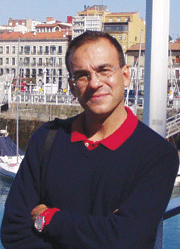E-Archive
Shot Peening in the Automotive Industry
in Vol. 18 - July Issue - Year 2017
New Combinations Of Shot Peening And Nitriding

Mario Guagliano
Nitriding is a well-known heat treatment, effectively used in automotives from "ancient" times. Crankshafts and other mechanical elements of the engine are nitrided to induce a better mechanical behaviour, able to improve wear and fatigue strength.
Nitriding diffuses nitrogen into the surface of a metal to create a case-hardened surface. The process has many different variables and is most commonly used on low-carbon, low-alloy steels. But it is used also on medium and high-carbon steels, titanium, aluminium and molybdenum. Recently it was also used to generate new duplex microstructure.
Nitriding can be also applied in combination with shot peening, to obtain major advantages related to the ability of shot peening of introducing compressive residual stresses in the surface layer of materials, higher than the ones achievable by nitriding, thus further improving some mechanical properties of the treated materials. The usual application of shot peening is as last treatment, after nitriding, otherwise…residual stresses –"bye-bye".
But there is another possible useful combination of shot peening and nitriding, not directly related to the final mechanical properties but to reduce the time and the cost of treatment. In fact, it is well known that nitriding is long and can be considered as a "bottle neck" of the whole technological process.
And, how about shot peening before nitriding? What could be expected from this different sequence of the two treatments? Indeed, if we apply shot peening in its usual way, that is to say, with standard intensity values and 100% coverage, we are not probably achieving our goal. What happens if we increase the intensity and/or the coverage?
In this case, shot peening becomes a treatment able to induce, just in the surface layer, severe plastic deformation, that is to say a plastic deformation at least equal to about 8 m/m. In fact, it is recognized that with such large plastic deformation, the microstructure of a metal is modified in terms of dislocation density and, finally, of grain size. The phenomenon is complex and can vary with respect of the materials. To make it simple, by these unusual shot peening treatments, it is possible to reduce the grain size down to 80-200 nm and, consequently, increase the number of grain boundaries. Materials with this kind of grain refinement have been proven to have superior properties and research on this subject is currently one of the most attractive in material science.
But…why severe shot peening (this is the name of the modified shot peening treatment) before nitriding? Are we going to lose the grain refinement if we heat the material up to 550°-600° C? That can be true, but if nitrogen is diffused in a microstructure characterized by nano-sized grains, the kinetic energy of the diffusion will be strongly accelerated and the time needed to complete the treatment significantly decreased.
Recent studies have proven that if severe shot peening is applied and then nitriding is done, the total time needed for completing the treatment is one half of the original one: in the case analysed, the material investigated was a low-alloy steel and the original nitriding time was 15 hours. After severe shot peening, the resultant total time was 7.5 hours while the depth and the characteristics of the nitrided layer of material were the same. A series of tests showed that also in terms of fatigue, we are not losing any point: the fatigue limit determined by using smooth specimens remains the same.
It is true that the results cannot be considered definitive and more effort must be devoted to confirm and possibly generalize the results achieved so far. Nevertheless, the benefit could be considerable and could open new windows for shot peening applications in the automotive industry.
Shot Peening in the Automotive Industry
by Mario Guagliano
Contributing Editor MFN and
Associate Professor of Technical University of Milan
20156 Milan, Italy
E-mail: mario@mfn.li



























